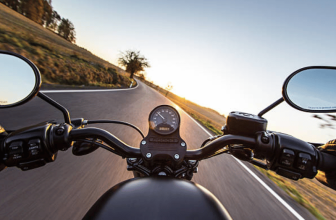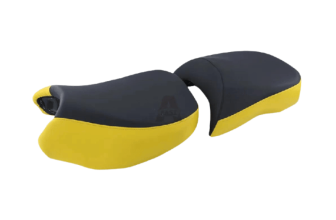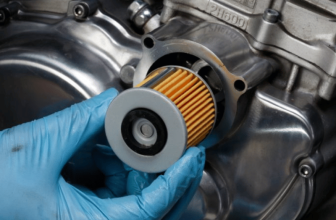Motorcycle Rearview Mirror Position, Placement, And Its Importance
Motorcycle rearview mirrors play a crucial role in ensuring a rider maintains awareness of the entire road and surrounding traffic, particularly in the rear. Unfortunately, due to oversight, many riders neglect the importance of correctly positioning and placing these mirrors. In light of this, I, Saleh, aim to shed light on the significance of motorcycle rearview mirror placement and its importance.
Riding a motorcycle poses unique risks compared to vehicles with three, four, or six wheels, as it relies on maintaining balance on just two wheels. Given its compact size, motorcycle riders must exercise constant vigilance on the roads to ensure safety. It is imperative for riders to keep their focus ahead while also being aware of the traffic conditions behind them.
In light of this, motorcycle riders essentially require an additional set of eyes to monitor the rear. This is where the motorcycle rearview mirror plays a crucial role. Properly positioned and aligned rearview mirrors serve as invaluable tools, providing riders with a clear view of the rear scenario. This visibility empowers riders to navigate the road safely, adjusting their approach based on the information gleaned from the mirrors.
Position the mirrors within the handlebar length
Correctly positioning the rearview mirrors within the length of the motorcycle handlebars is crucial, constituting the primary criterion for optimal placement. While certain cruiser and scrambler motorcycle types may deviate from this norm by situating the mirrors outside the handlebar edge or closer to the middle, such deviations are non-standard and should be avoided as exceptions.
By adhering to the handlebar length guideline, the mirrors remain safeguarded, reducing the risk of breakage in the event of a crash or a fall. This placement ensures that no irregular protrusions come into contact with the mirrors during such situations. Additionally, this positioning reflects the rider’s accurate perception of their motorcycle’s width, proving invaluable when navigating through tight traffic, overtaking, or maneuvering through various road conditions.
Positioning the mirrors in completely upright mode
When situating the rearview mirrors, it is advisable to position them in an upright mode, a practice commonly followed by most manufacturers across various categories and types of motorcycles. This orientation proves highly beneficial, facilitating effortless observation through the mirrors. Moreover, it enables convenient adjustments for a wide range of riders, ensuring that individuals can achieve optimal rearview coverage with ease.
Place the rearview mirrors near shoulder height
For optimal placement, motorcycle rearview mirrors are ideally positioned at a height near the rider’s shoulder height. While most motorcycle manufacturers adhere to this standard placement, some may vary in different categories to introduce distinct styling. Nevertheless, for maximum benefit and seamless access to the mirrors, riders are advised to position them close to their shoulder height.
Position the mirrors to cover at least 2/3 of the rearview
A common error among many riders is positioning motorcycle rearview mirrors solely to monitor the closest vehicles at the rear. However, it’s essential to recognize that every motorcycle is equipped with two rearview mirrors to provide a comprehensive view of the rider. These mirrors are designed to offer a 360-degree perspective, allowing the rider to be aware of their surroundings. Therefore, riders should judiciously adjust the position of their motorcycle mirrors to ensure coverage of at least two-thirds of the entire rear view through a single mirror.
Position to cover 100% of rearview by both mirrors
Once you have initially positioned the motorcycle mirrors to capture at least two-thirds of the entire rear view, it is essential to make further adjustments to ensure 100% coverage using both mirrors. To achieve this, while seated on the motorcycle, carefully tweak the mirror positions by rotating them on the mirror arms. Find the optimal angle that allows you to see the complete rear section through both mirrors. This practice is incredibly beneficial, essentially providing you with an additional set of eyes at the rear. Cheers!







